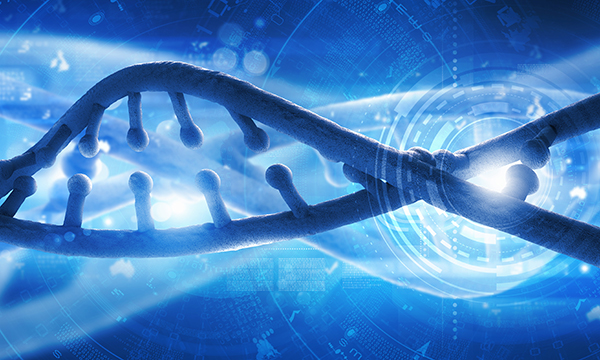
On July 12, a Food and Drug Administration panel for the first time recommended approval in the U.S. of a gene therapy-based treatment. The treatment, first developed by Dr. Carl June of the University of Pennsylvania, a member of amfAR’s Cure Council, is based on the use of so-called CAR cells to kill cancer cells.
On July 13, amfAR announced two new grants to research teams pursuing similar strategies involving CAR (chimeric antigen receptor) cells, which have shown significant potential for their ability to kill HIV-infected cells. The grants are part of a new round of seven awards totaling $2.3 million in support of gene therapy-based approaches to curing HIV. They were awarded through the amfAR Research Consortium on HIV Eradication (ARCHE), a program that fosters collaboration among teams of scientists.
"Curing HIV is no longer a pipe dream, and the case of ‘the Berlin patient’ provides proof-of-principle that a cure is possible. However, several complex scientific challenges remain, and these new grants reflect amfAR’s determination to pursue a range of strategies to overcome them." CAR Cells and Cure
Scott Kitchen, Ph.D., of University of California, Los Angeles, plans to improve the effectiveness of CAR cells at killing HIV-infected cells by increasing their ability to detect the appropriate target cells and prolonging their survival. He also plans to engineer improvements to minimize the loss of CAR cells to attack by the immune system, and to design a mechanism to “switch off” CAR cells should they become unsafe or are no longer needed.
And a team led by Richard Wyatt, Ph.D., of The Scripps Research Institute in La Jolla, CA, plans to generate CAR T cells with the ability to kill HIV-infected cells just as they begin to produce virus. Additionally, the CAR T cells will be engineered to produce antibodies that may destroy virus and the cells that produce it.
The other grantees are: Hildegard Büning, Ph.D., of Hannover Medical School in Hannover, Germany; Keith Jerome, M.D., Ph.D., of University of Washington in Seattle; Hans-Peter Kiem, M.D., F.A.C.P., of Fred Hutchinson Cancer Research Center, Seattle; Yasuhiro Takeuchi, Ph.D., of University College London, United Kingdom; Drew Weismann, M.D., Ph.D., of University of Pennsylvania, Philadelphia.
Genetic Scissors
The researchers will pursue projects aimed at: designing and refining vectors that can accurately target the cells that make up the reservoir and regions such as the lymph nodes, where the reservoir cells tend to be concentrated; and exploring the potential of using viral and non-viral delivery mechanisms to deliver emerging types of genetic scissors that could cut the virus out of human DNA.
“Curing HIV is no longer a pipe dream, and the case of ‘the Berlin patient’ provides proof-of-principle that a cure is possible,” said amfAR Chief Executive Officer Kevin Robert Frost, referring to the only person known to have been cured of HIV. “However, several complex scientific challenges remain, and these new grants reflect amfAR’s determination to pursue a range of strategies to overcome them.”
New Innovation Grants
In a second round of grants, amfAR awarded $1.2 million to six researchers who will explore mechanisms of HIV persistence and the potential for HIV eradication. These “Innovation” grants are designed to test and advance innovative ideas in the early stages of testing.
“Through these projects, we will continue to forge the scientific alliances − within HIV and beyond − that we believe are our best hope for accelerating progress toward a cure.” For instance, Andrew Badley, M.D., from the Mayo Clinic College of Medicine in Rochester, MN, will test whether ixazomib, a drug currently used to treat the blood cancer multiple myeloma, can reduce the size of the viral reservoir in the body. Joshua Schiffer, M.D., from Fred Hutchinson Cancer Research Center in Seattle, WA, will test a drug normally used to prevent organ transplant rejection for its potential to eliminate the persistent HIV reservoir.
Andrew Henderson, M.D., from Boston University School of Medicine in Boston, MA, and Fabio Romerio, Ph.D., from University of Maryland, Baltimore, MD, will both explore a cure strategy known as “block & lock,” which aims to permanently silence HIV and prevent the emergence of virus when antiretroviral therapy is stopped.
Brad Jones, Ph.D., from The George Washington University, Washington, DC, aims to develop a new class of broadly neutralizing antibodies that enable the immune system to recognize proteins not normally accessible to the body’s antibody making machinery. The goal is to increase the number of people in whom broadly neutralizing antibodies are able to find and kill HIV-infected cells.
Berlin Patient
And to better understand how Timothy Brown, “the Berlin patient,” was cured of HIV, Benjamin Burwitz, Ph.D., from Oregon Health and Science University in Portland, will explore the precise mechanisms that led to his cure by generating a monkey model lacking the protein CCR5, the primary means by which most types of HIV infect cells.
“These two rounds of grants get to the heart of the scientific challenges we face in our search for a cure,” said Dr. Rowena Johnston, amfAR’s vice president of research. “Through these projects, we will continue to forge the scientific alliances − within HIV and beyond − that we believe are our best hope for accelerating progress toward a cure.”
Learn more about the ARCHE and Innovation grants.